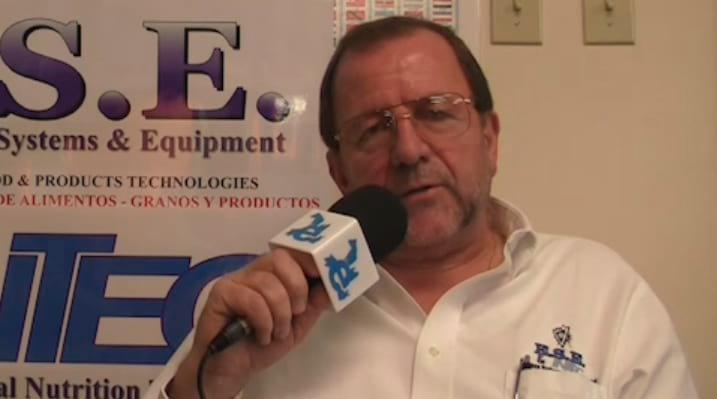Explore all the information on
Feed additives
Welcome to the page about Feed additives of Engormix; a source of knowledge on Feed additives.
The animal feed enzymes market is expected to garner noteworthy gains on account of surging concerns over disease outbreak among poultry animals. Imposition of strict regulations to encourage livestock safety is supporting animal feed enzyme adoption.
Livestock owners nowadays are willing to buy high-quality feed grades. The product mostly helps provide a nutrition-rich balanced diet to livestock. In addition, these high-quality feeds ensure animal wellbeing and help curb potential...
Comments : 0
Recommendations: 1
1. Introduction Antibiotics has many possible benefits such as; improvement of feed utilization, reduction of mortality, improvement of weight gain, body weight evenness and feed conversion rate (Bolu et al., 2011). Currently, the use of antibiotics has come under critical reviews since antibiotic resistant bacteria strains can be transferred from the animals to humans consuming the products (Bent & Jesen, 2001). Development of alternatives to Antibiotic Growth Promoters...
Comments : 0
Recommendations: 0
.jpg&w=3840&q=75)

Trade, regulations and current challenges in the rendering industry
Suggested link
Nasser Odetallah, Executive Manager for Global Technical Services at Novus, speaks to us about raw materials quality during Novus 25th Anniversary Celebration held in their HQ in Saint Charles, Missouri....
Comments : 19
Recommendations: 2
Júlia Pié (Biovet) presented research on natural products designed to replace commonly used additives, during the 8th Symposium on Gut Health in Production of Food Animals in St. Louis, USA....
Comments : 3
Recommendations: 11


Post processing for Aquafeed and pet food - Josef Barbi (E.S.E. & Intec)
Suggested link
...
Comments : 0
Recommendations: 0
Minerals play an important role in regular dietary requirements of animal feed and are essential for growth, reproduction and milk production. Essential minerals are destroyed during the digestion process due to interactions with other components of feed. Use of Organic Trace Minerals in the feed is the optimal way to ensure protection and absorption of minerals through the intestinal walls into the blood stream and reaching various organs to perform...
Comments : 17
Recommendations: 3
.jpg&w=3840&q=75)

Trade, regulations and current challenges in the rendering industry
Suggested link
4 CRITICAL PARAMETERS TO BE CONSIDERED WHEN YOU CHOOSE A FEED ADDITIVE Feed Additives are essential ingredients of the feed to; * Meet the animals’ nutritional requirements (vitamins, minerals, amino acids etc.) * Increase the efficiency of the feed raw materials (enzymes (Phytase, NSP’ase, protease etc.) * Increase the bioavailability of the nutrients by balancing the intestinal environment (pre-probiotics, phytobiotics etc) * Increasing the animal performance by fighting...
Comments : 0
Recommendations: 3
Introduction The implementation and monitoring of quality control, quality assurance systems, and their standard operating procedures in feed mill operations are integral in assessing the overall success and profitability of livestock operations. The proper sampling of finished feed and its subsequent analysis is a common standard operating procedure that is used for most swine nutrition studies to ensure that adequate diet manufacturing and delivery have been met; therefore,...
Comments : 0
Recommendations: 0


Post processing for Aquafeed and pet food - Josef Barbi (E.S.E. & Intec)
Suggested link
Introduction Lysine (Lys) is the second limiting amino acid (AA) in practical corn-soybean meal diets. Growth performance and proper muscle development of broiler chickens is highly dependent of an adequate dietary supply of Lys. Although all AA coded in the nucleic acid sequence are required for muscle protein synthesis, also depending on its frequency and dietary supply, Lys is the main essential AA required for muscle building for broilers [1]. Lysine has also gained...
Comments : 15
Recommendations: 5
1. Introduction Mycotoxins are fungal secondary metabolites with adverse effects on human and animal health. To date, more than 400 different molecules, produced by several types of fungi, have been characterized [1]. Because of their high toxicity, aflatoxins B 1 , B 2 , G 1 , and G 2 (AFB 1 , AFB 2 , AFG 1 , and AFG 2 ) are the most important, and are produced by the species of Aspergillus section...
Comments : 0
Recommendations: 0
.jpg&w=3840&q=75)

Trade, regulations and current challenges in the rendering industry
Suggested link
Introduction Fish was used as a bioindicators for the detection pollution of the aquatic environment [1]. Fish occupies the top of food chain and is the main source of protein without fats to keep people fit. Heavy metals transfer by water through fish causing diseases for consumers [2]. Nile tilapia is the most important and promising aquaculture fish species in Egypt, representing more than 80% of total tilapias production [3]. Egypt ranked the second in cultured tilapia's...
Comments : 0
Recommendations: 0
A feed ingredient manufacturer had contracted an encapsulation company to produce coated minerals for use in a feed product for monogastric animals. She said that in warm weather, the material turned into rock-hard little pellets. If they were to mix the...
Comments : 0
Recommendations: 4


Post processing for Aquafeed and pet food - Josef Barbi (E.S.E. & Intec)
Suggested link
In commercial aquaculture, the cost of feed is the main problem as it constitutes up to 60% of the total cost of production1. Hence, many researchers examined the use of substitute protein and lipid sources, especially the vegetable sources to replace fish meal and fish oil (FO) that are the cheaper, leading to reduce the feed cost2,3. Lipid is considered one of the most important components in tilapia diets that provide energy and essential fatty acids. Fish also need lipids for...
Comments : 1
Recommendations: 2
Introduction Searching for novel economic animal food sources to overcome the Egyptian gap in animal nutrition, many attempts were carried out to evaluate new agro-industrial by-products (Abdelhamid, 1988) such as rice straw and maize stover (El-Shinnawy et al., 1986 and Abdelhamid et al., 1989a, b, 1991 &1994), poor quality barley straw (Gabr et al., 1989), pea by-products (Abdelhamid and El-Ayoty, 1988), dried sugar beet pulp (Abdelhamid, 1992), whole sunflower seeds...
Comments : 0
Recommendations: 0
.jpg&w=3840&q=75)

Trade, regulations and current challenges in the rendering industry
Suggested link
Introduction Quality forage resources as grasslands, fruit juice industry with a cultivated forage crops pulp residue are of great importance for Turkey. The share of total arable area of livestock feed crops sowing areas of advanced countries is 10%, but, it is, unfortunately, just 3.5% in Turkey. Rich pulp in terms of a significant amount of the water released as waste material in Turkey cannot be assessed at the desired level for ruminant animals. Thus, for making it harmless...
Comments : 0
Recommendations: 2
-According to the United Nations, by 2050 there will be a world population of 9700 million inhabitants. -The effects of climate change with prolonged drought will drastically affect grain production. -The depletion of non-renewable fossil energy reserves (oil, gas) will pressure the production of cereal ethanol. -There will be an unprecedented competition between humans and animals for food resources (Corn, wheat, sorghum, soy, etc.). -The producers will be forced to...
Comments : 4
Recommendations: 6


Post processing for Aquafeed and pet food - Josef Barbi (E.S.E. & Intec)
Suggested link
Introduction The use of antibiotics and other antimicrobials has been practiced for many years to enhance growth performance, disease prevention and efficient use of feeds in the livestock feed industry (Barton, 2000; Gaskins et al. 2002). It is a growing concern about the potential of antibiotics in livestock feeds due to the increasing number of antibiotic-resistant pathogens in human and animals (Williams and Heymann,1998). Therefore, it is necessitated to find...
Comments : 4
Recommendations: 3
Introduction South Sinai is semi-arid area with salt affected natural resources (plants, water, soil, etc). Therefore, feed resources in this region characterize one of the main difficulties for animal production development. Farmers in Egypt are concerned with ways to prevent salinification and economically produce fodder crops to overcome the problems of feed shortage that lead to high feeding costs (Fahmy et al., 2010). On the other side, big differences were found between...
Comments : 0
Recommendations: 0
.jpg&w=3840&q=75)

Trade, regulations and current challenges in the rendering industry
Suggested link
Nutriad has demonstrated the use of Quorum Sensing (QS) as a tool in the development of two new feed additives: one for broiler production and one for aquaculture. QS Is a form of bacterial communication that is critical to bacterial virulence. By investigating the ability of several highly bioactive compounds to inhibit QS, Nutriad was able to select a combination of components that, in in vivo models, had a positive effect on the...
Comments : 2
Recommendations: 0
Global Soy Chemicals Market is set to grow from its current market value of more than $25 billion to over $44.5 billion by 2024; according to a new research report by Global Market Insights, Inc.
Escalating awareness about medicinal benefits of soybean and growing demand for bio-based products will augment soy chemicals market share by 2024. Also, intensifying environmental concerns are likely to offer impetus to soy chemicals industry growth. Soy chemicals...
Comments : 0
Recommendations: 1






















